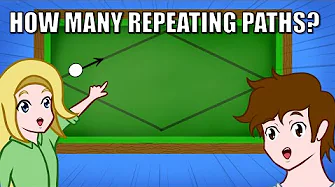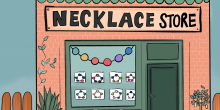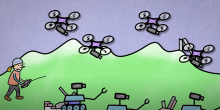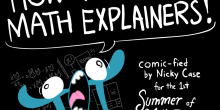About a year ago, I came across an interesting event organised by the Youtube channel 3Blue1Brown, famous for its accessible videos on complex math topics. This event, called the Summer of Math Exposition (or SoME), is a yearly competition where participants are invited to create a video explaining a mathematical concept. There is no constraint on the length of the entry, its format, or the topic explored, as long as it pertains to mathematics.
Sadly, when I heard about this event last year, it was only a handful of days before the closure of the submission period and I did not have time to join the competition. I was however on time to participate as a judge and seeing all these videos was the final push I needed to start thinking about my entry for the next year.
Why did I join a video competition?
I am very passionate about making math more accessible and have already been making “mathematical videos” for about three years now. So far, I had mostly created videos to enhance my academic presentations and make some of the concepts I describe easier to understand. These videos are usually short (less than 30 seconds), without sound, and simply focusing on a specific property. For example, I have a video showing how counting visits of a Markov chain gives a value close to the stationary measure or how we can see a transition of behaviour for particle systems as the temperature increases.
With this pre-existing interest and experience in making videos about mathematical concepts, I saw this competition as a way to challenge myself and to develop new video-editing skills, while also reaching a larger and more diverse audience. For this reason, I wanted to participate in this event the moment I heard about it. I just waited a year before having the opportunity to do so.
How did I choose the topic?
While all levels of difficulty are accepted, I personally wanted to create a video whose topic was accessible but whose solution was not easily guessed. Working in probability and being particularly interested in the relationship this field has with many concrete examples, I wanted to talk about a “relatable” random phenomenon. In the end, I decided to cover properties of randomly moving chess pieces, and more precisely the number of moves it takes them to return to their original position when moving around the board.
I chose this topic because I believed it fit my two main goals: accessibility and complexity. Accessibility, since the idea of a chess piece moving around the board in a random way seems simple enough. Complexity, since the question usually first appears as complicated and without clear ways on how to tackle it. As a bonus point for choosing this topic, the final solution is actually quite easy to compute and based on a sequence of rather simple ideas.
With the topic chosen, I just had to present it properly.
How did I create the video?
In general, I would advise anyone who wants to join such a competition to use whatever skill they already have: coding, drawing, using animation software, facing the camera… or any combination of these! I was personally most comfortable with coding animations, so this is the approach I used and the one I will detail now.
My process for making the video can mostly be split into three steps.
- First, I wrote a draft of the video I wanted to make. I spent about a week on this step, to review the story with fresh eyes a couple of times and discuss it with people around me. At the end of this step, I had a document with the text I wanted to read and notes on what should happen in the video at the same time.
- Second, I coded all the different parts of the video. I started this step in parallel to the previous one, as I already knew some of the animations I wanted to make, and spent about two weeks on it. At the end of this step, I had a set of python scripts that could create all the frames of the video and that contained a lot of parameters to be fine-tuned.
- And third, I recorded myself and edited the video. I spent a couple of days on this step, cleaning and organising the recordings, tuning the code to match the speed of the frames with the pace of my voice, and adding the subtitles. At the end of this step is the final video that I submitted to the competition.
Did I learn from this experience?
A lot! I would definitely recommend anyone interested in participating in this competition to do so. It was a very fun challenge to create a (longer) video explaining math topics from start to finish. I also now have an example of what I am able to make and see what are my strengths and weaknesses: I am quite happy with the final quality of the animations and their pacing, but need to improve on the audio part of the video.
In the coming months, I intend to improve my coding practices when creating such animations and work on the quality of my audio recording skills. Hopefully, by next year I submit an even better entry to the competition, as I already have a possible topic in mind… For now, enjoy the video!






